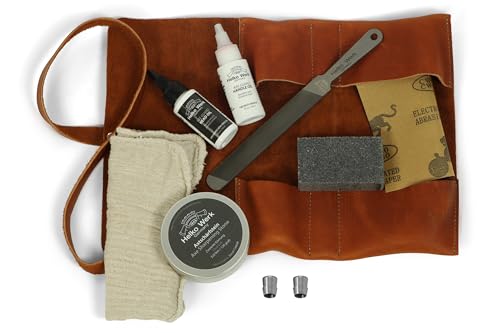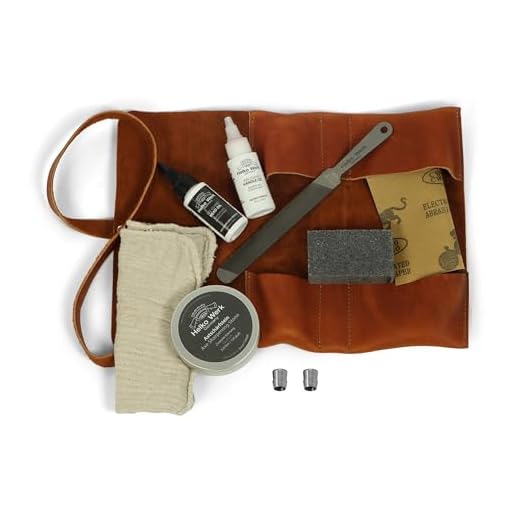




If you’re an avid outdoors enthusiast or have a love for woodworking, you likely understand the importance of a well-maintained axe. However, over time, the constant pounding and impact can cause the axe head to become loose, compromising its effectiveness and making it potentially dangerous to use. But worry not! Fixing a loose axe head is a relatively simple task that can be done with just a few basic tools and a little bit of know-how.
Step 1: Inspect the Axe Head and Handle
Before you begin the repair process, carefully inspect the axe head and handle for any signs of damage. Look for cracks or splits in the wood, as well as any visible wear or tears around the axe head itself. This initial inspection will help you determine the extent of the problem and identify any necessary repairs beyond just tightening the head.
If you find any major damage or cracks, it may be best to consider replacing the handle altogether. This will ensure the long-term safety and performance of your axe.
Axe head repair: a step-by-step guide
If you have a loose axe head, it’s important to repair it before it becomes a safety hazard. Here is a step-by-step guide to help you fix a loose axe head:
- Start by removing any debris or dirt from the axe head using a brush or cloth. This will ensure a clean surface for the repair.
- Inspect the handle for any damage or splintering. If there are any issues with the handle, it’s best to replace it before fixing the loose axe head.
- Once the handle is in good condition, you can move on to tightening the axe head. Carefully inspect the axe head and handle for any screws or bolts that may need to be tightened. Use a suitable wrench or screwdriver to secure any loose hardware.
- If the axe head is still loose after tightening any screws or bolts, you may need to use epoxy resin to secure it in place. Choose a high-quality epoxy resin that is suitable for outdoor use.
- Apply the epoxy resin to the top of the handle where it meets the axe head. Make sure to cover the entire surface area that will come into contact with the axe head.
- Press the axe head firmly onto the epoxy resin, making sure it is aligned correctly. Hold it in place for a few minutes to allow the epoxy to bond.
- Once the epoxy has set, check the tightness of the axe head. If it is still loose, you may need to apply another layer of epoxy and repeat the process.
Remember to follow all safety precautions when working with sharp tools. It’s important to have a secure axe head to prevent accidents and ensure the longevity of your tool.
The importance of a secure axe head in wood chopping
When it comes to chopping wood, the axe head plays a crucial role in ensuring both efficiency and safety. A loose axe head can pose serious risks, making it essential to have a securely attached head before getting to work.
Efficiency
A secure axe head allows for maximum power transfer from the swing to the wood, resulting in more effective chopping. When the head is loose, energy is wasted as it absorbs some of the force from the swing, diminishing the overall impact on the wood. This can lead to prolonged chopping times and unnecessary fatigue.
Moreover, a loose axe head can cause the blade to vibrate during the swing, reducing its accuracy and making it harder to hit the wood precisely where intended. This lack of precision can result in uneven cuts and unmanageable wood pieces, hampering productivity in the long run.
Safety
A secure axe head is paramount for safety during wood chopping activities. When the head is properly attached, it reduces the risk of the head unexpectedly flying off during a swing, which can cause severe injuries to the person swinging the axe or those nearby.
Additionally, a loose axe head increases the chance of the axe getting stuck in the wood. This can lead to dangerous situations where excessive force is required to remove the axe or when it dislodges unexpectedly, posing a danger to anyone in the vicinity.
Properly securing the axe head is essential to ensure that it remains firmly in place throughout the chopping process, minimizing the risk of accidents and injuries.
- Regularly inspect the axe head for any signs of loosening or damage.
- Tighten the axe head using the appropriate tools and techniques recommended by the manufacturer.
- Check the axe head periodically during use to ensure it remains secure.
- If the axe head becomes loose during chopping, stop immediately and address the issue before continuing.
By prioritizing the security of the axe head when chopping wood, both efficiency and safety can be maximized. Remember to always maintain a firm and secure attachment to avoid any potential accidents or disruptions to the wood chopping process.
Identifying a loose axe head
When using an axe, it is important to regularly check the condition of the axe head. Over time, the axe head can become loose and may need to be repaired or replaced. Here are some signs that indicate a loose axe head:
| Signs of a Loose Axe Head |
| – Movement: If the axe head moves or wobbles when using the axe, it is a clear sign that the head is loose. |
| – Noise: A loose axe head can produce a rattling or clanging noise when striking an object, indicating the head is not securely attached. |
| – Gaps: Check for any visible gaps between the axe head and the handle. If there are gaps, it suggests that the head is loose and not properly fitted. |
| – Damage: Examine the area around the axe head for signs of wear or damage. If there is damage, it may be due to a loose head causing improper alignment during use. |
If you notice any of these signs, it is crucial to fix the loose axe head before continuing to use the axe. Ignoring a loose axe head can lead to further damage to the axe and pose a safety risk during use.
In the next section, we will discuss how to fix a loose axe head using different methods and tools.
Signs of a loose axe head and why it needs immediate attention
An axe is a valuable tool for various outdoor activities such as chopping wood, clearing brush, and splitting logs. However, over time, the head of the axe may become loose and detach from the handle. This can be extremely dangerous and needs immediate attention to prevent accidents.
Signs of a loose axe head
There are several signs that indicate a loose axe head:
- The head wobbles or moves when swinging the axe.
- You hear a distinct rattling noise coming from the axe head when in use.
- The head feels loose or unstable when gripping it.
- Visible gaps or separation between the head and handle.
Why it needs immediate attention
A loose axe head poses a significant safety risk if not addressed promptly:
- Increased risk of accidents: A loose head can unexpectedly detach from the handle during use, causing the axe to fly off in unpredictable directions, potentially injuring yourself or others nearby.
- Loss of control and accuracy: The movement of a loose axe head can cause the swing to be uneven and imprecise, making it harder to accurately hit the intended target.
- Damage to the handle or head: If the head is not properly secured, it can cause stress and damage to the handle or head, reducing the overall lifespan and effectiveness of the axe.
- Reduced efficiency: A loose axe head can impact the force transfer during each swing, resulting in reduced efficiency and effectiveness in chopping wood or other tasks.
It is essential to address any signs of a loose axe head immediately to ensure your safety and the longevity of your axe. Regularly inspect your axe for any signs of wear or looseness and take the necessary steps to tighten or replace the head as needed.
Tools required for fixing a loose axe head
Fixing a loose axe head is a simple task that can be done with the right tools. Here are the tools you will need:
- Adjustable wrench: This tool will be used to tighten the bolts or screws that secure the axe head to the handle.
- Screwdriver: Depending on the type of axe head you have, you may need a screwdriver to remove and reattach the axe head.
- Hammer: A hammer can be useful for tapping the axe head back into place if it has shifted.
- Pliers: Pliers can be handy for holding bolts or screws in place while you tighten them.
- Sandpaper: Sandpaper can be used to remove any rust or debris from the axe head before reattaching it.
- Wood glue: If the axe head is loose due to a damaged handle, wood glue can be used to reinforce the connection.
It is important to have these tools on hand before starting the process of fixing a loose axe head. Having the right tools will make the task much easier and ensure that the axe head is securely reattached.









